 Bill Thomas, a media and branding idea expert and broadcast & radio veteran (@BillThomas), shared a link on Twitter to an Ad Week article about three brands that bought ads in Super Bowl 54, targeting the 50+ demo. It’s not surprising, as the author of the article points out, that this is the age group that is most active and ready to spend online. Any guess on what the three brands are, that were targeting this Baby Boomer age group? Do you think it was iHeartMedia, Cumulus, and Entercom? Stay tuned.
Bill Thomas, a media and branding idea expert and broadcast & radio veteran (@BillThomas), shared a link on Twitter to an Ad Week article about three brands that bought ads in Super Bowl 54, targeting the 50+ demo. It’s not surprising, as the author of the article points out, that this is the age group that is most active and ready to spend online. Any guess on what the three brands are, that were targeting this Baby Boomer age group? Do you think it was iHeartMedia, Cumulus, and Entercom? Stay tuned.
Citizen Insight Academy
The City of Winchester holds a Citizen Insight Academy annually, and I signed my wife Sue and I up for the 2020 edition. We’re only nine weeks into this 16-week program and  it’s been illuminating learning about our city and the way it operates. The other evening, we had a session with the city’s Emergency Management and E-911 departments.
it’s been illuminating learning about our city and the way it operates. The other evening, we had a session with the city’s Emergency Management and E-911 departments.
You can imagine my reaction when the head of the E-911 department began her talk with “People don’t listen to the radio anymore, but they’re really into social media.” She went on to say how she grew up listening to the radio but how other forms of communication, like social media, have replaced that habit. Much like smartphones have replaced people’s landline telephones.
She told us that most calls into the city’s 911 switchboard come from wireless phones versus landlines. The percentage was something like 75% wireless to 25% landline. I myself have been a cellphone only household for over a decade, and our class of 35 had only about four people who still have a landline.
Traditional Radio Stations Have Lost Faith of Listeners
If I thought our city’s 911 Director was tough on radio, the BBC’s head of radio and education, recently said “Radio as we’ve always known it, has lost the faith of listeners.” He explained that “where once it was everything, now it is not. In fact, for many listeners, it is no longer their default.”
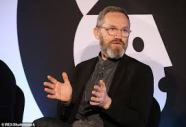
BBC Radio Chief, James Purnell
In 1920, when commercial radio service began in America, you were lucky if you had a single choice for wireless communication. In many localities, you might have only had radio service after sunset via the AM skywave phenomena.
As more radio stations came on the air, Americans began to develop a radio habit. Radio listening was something we did while working, riding in the car or while we were at play. It provided the audio accompaniment to our lives. But everything’s changed. Now radio stations need to create an experience that earns a place in someone’s day.
NuVoodoo on Media Addictions
I wasn’t surprised to see NuVoodoo releasing some data from their latest research that shows all age groups today are addicted to their Smartphones. But what caught my eye was how Millennials, Gen X and Gen Z groups were more addicted to a favorite FM or AM radio station than Baby Boomers.

Which got me to thinking, why were the very people who grew up with radio and few other choices, be the age group least engaged with the medium today?
Boomers Know Great Radio When They Hear It

The Real Don Steele
Baby Boomers grew up during a time when great radio personalities dominated the airwaves. Broadcasters like Harry Harrison, Robert W. Morgan, Larry Lujack, Dan Ingram, The Real Don Steele, Ron Lundy and so many more filled our lives with information, entertainment, community and companionship. It was a time when radio stations had local news teams, great promotions, exciting radio jingles, stationality and air personalities. Personalities, so important in our lives that we wanted to meet them more than the recording artists that created the music they played.
Radio for Baby Boomers isn’t like that anymore, so they’re moving on.
The boomer generation now embraces smartphones, smart speakers and social media with a vengeance, taking all their dollars to spend right along with them. Baby Boomers hold around 70% of the disposable income in the United States and they make up 50% of sales for all consumer package goods.
The Big Three
So, who were the media companies that want to gain a larger share of the 50+ demo? The ones that know that Baby Boomers are the most active and ready to spend their dollars online?
Google, Amazon and Facebook, that’s who.
Facebook advertised during a Super Bowl television broadcast for the very first time in 2020. They hired as pitchmen, Chris Rock (54) and Sylvester Stallone (73). Both men are iconic celebrities and are part of this powerful consumer demographic, the 50+ audience.
Meanwhile, radio continues to jettison the very people that connects them with their local audience, the radio personality.

 Radio is a business.
Radio is a business. Remember when the rock group, The Buggles, introduced a new cable TV channel, MTV (Music Television) with the song “
Remember when the rock group, The Buggles, introduced a new cable TV channel, MTV (Music Television) with the song “ Radio used to really promote its greatest asset, its radio talent. WHDH in Boston promoted itself as having “New England’s Finest Radio Entertainment 24 Hours Every Day!” The “Big 5 on 85” print ad featured Jess Cain, Fred B. Cole, Hank Forbes, Bob Clayton and Norm Nathan, as their air staff, and never mentions what kind of music they play, or news they featured or anything else the radio station did. WHDH was not alone in doing this. Every radio station promoted its talent line-up. Radio air talent WAS the reason people listened.
Radio used to really promote its greatest asset, its radio talent. WHDH in Boston promoted itself as having “New England’s Finest Radio Entertainment 24 Hours Every Day!” The “Big 5 on 85” print ad featured Jess Cain, Fred B. Cole, Hank Forbes, Bob Clayton and Norm Nathan, as their air staff, and never mentions what kind of music they play, or news they featured or anything else the radio station did. WHDH was not alone in doing this. Every radio station promoted its talent line-up. Radio air talent WAS the reason people listened.
 Sue and I just returned from an eight-week, 11,175-mile cross country road trip across America traveling through 23-states. Seeing America from the car has been a Bucket List item for both of us. Our jobs have had us seeing this great land from the air; mine as a radio manager and educator/consultant, and Sue’s as a flight attendant.
Sue and I just returned from an eight-week, 11,175-mile cross country road trip across America traveling through 23-states. Seeing America from the car has been a Bucket List item for both of us. Our jobs have had us seeing this great land from the air; mine as a radio manager and educator/consultant, and Sue’s as a flight attendant.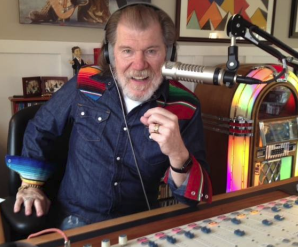

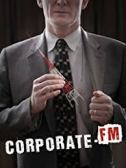 Kansas City Filmmaker
Kansas City Filmmaker 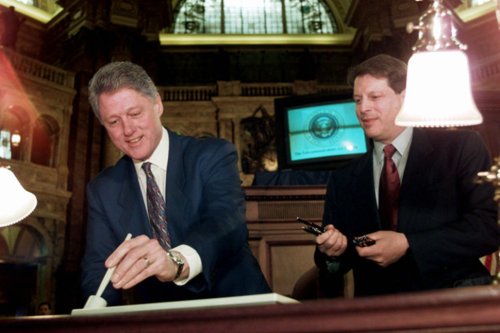 It was supposed to provide competition between the phone companies and the cable companies with the goal to increase services and reduce prices to the consumer.
It was supposed to provide competition between the phone companies and the cable companies with the goal to increase services and reduce prices to the consumer. Everything old is new again. I’m sure you’ve heard the phrase. “Everything old is new again” was the title of a song in the movie musical “All That Jazz.” Part of the lyrics to this Peter Allen/Carole Bayer Sager song include:
Everything old is new again. I’m sure you’ve heard the phrase. “Everything old is new again” was the title of a song in the movie musical “All That Jazz.” Part of the lyrics to this Peter Allen/Carole Bayer Sager song include: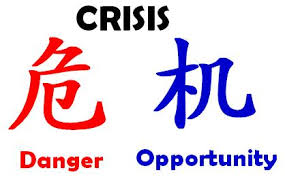 Radio has been here many times in it’s almost 100-year history before.
Radio has been here many times in it’s almost 100-year history before. There’s an old saying “Nothing lasts forever.” Do you remember flying on TWA or Pam Am? How about shopping at Woolworths? Broadcasters will remember names like Group W Westinghouse Broadcasting, or Taft Broadcasting, or Nationwide, or RKO General that would put the successful Bill Drake Top 40 format (with the non-stop innovations & promotions of 93-KHJ’s Ron Jacobs) in major cities across North America. They’re all now a memory.
There’s an old saying “Nothing lasts forever.” Do you remember flying on TWA or Pam Am? How about shopping at Woolworths? Broadcasters will remember names like Group W Westinghouse Broadcasting, or Taft Broadcasting, or Nationwide, or RKO General that would put the successful Bill Drake Top 40 format (with the non-stop innovations & promotions of 93-KHJ’s Ron Jacobs) in major cities across North America. They’re all now a memory.